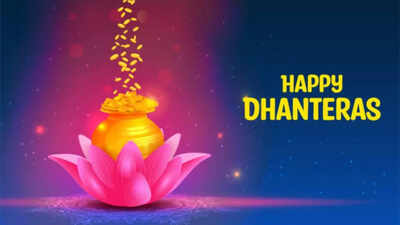ARTICLE AD BOX

As the excitement for Diwali begins to build, one day stands out as the perfect start to the celebrations– Dhanteras. Across India, you’ll see families visiting jewelers and markets, picking up gold coins, silver utensils, or even a small piece of jewelry.
For many households, it’s not just shopping; it’s a cherished tradition.
And for businesses, it’s easily one of the busiest and most awaited days of the year.But there’s more to Dhanteras than the glimmer of gold and silver. Behind the festive rush lies a rich history of ancient beliefs, folktales, and cultural practices that have been passed down through generations. This day is deeply connected to prosperity, health, and positive energy, which is why buying precious metals isn’t just about wealth– it’s about welcoming good fortune into your home.

So, why exactly is Dhanteras linked to gold, silver, and prosperity? The answer goes far beyond shopping– it’s about tradition, devotion, and age-old stories that continue to guide how people celebrate this special day.A story of protection: The prince, the wife, and the night of fateOne popular story behind Dhanteras is about a young prince who, according to a prophecy, was fated to die just four days after his wedding. Determined to save him, his wife stayed awake all night, keeping him entertained with songs and stories.
She also placed gold, silver, and ornaments at the entrance of their room and lit many oil lamps around the house. When Yama, the God of Death, came in the form of a serpent, the light from the lamps and the shine of the metals distracted him. He couldn’t enter the room and had to wait outside, listening to the stories, before leaving at sunrise.This is believed to be the origin of the Yamadeepdaan tradition, where people light a diya outside their homes on Dhanteras to protect their family and invite well-being.

Yamadeepdaan: The lamp that signifies safetyAccording to old beliefs, lighting a lamp for Yama on Dhanteras helps keep away untimely death and negative energy. According to a report by The Times of India, ancient texts like the Skanda Purana also mention that offering a lamp to Lord Yama on this day brings peace and protection from unexpected dangers.Even though this ritual is quieter than the hustle of shopping and celebrations, many families still follow it– often just because it’s a tradition passed down through generations.Goddess Lakshmi and the churning of the oceanAnother reason Dhanteras is so special is its link to the Samudra Manthan, or the churning of the cosmic ocean. According to online reports, legends say that on this day, Goddess Lakshmi, the goddess of wealth and prosperity, appeared from the ocean. Her arrival is considered very lucky and marks the start of the Diwali celebrations.

It’s also believed that Dhanvantari, the divine doctor, appeared on the same day carrying a pot of amrit, the nectar of immortality.
That’s why Dhanteras is not just about wealth– it’s also a day to celebrate health and well-being.Gold and silver: Symbols beyond material valueThe tradition of buying gold and silver on Dhanteras comes from the story of the prince’s wife, who placed shiny, valuable items at the doorstep to protect her husband. Over time, this act became symbolic– buying gold or silver came to represent not just wealth, but also safety, blessings, and good luck.Today, whether it’s a silver coin, a new utensil, or a piece of jewelry, the idea is the same: to bring something positive and prosperous into the home, welcoming the festive season with good energy.A custom that still resonatesEven though Dhanteras celebrations have changed over the years– with digital gold, online shopping, and new gift ideas– the meaning behind the day stays the same. It’s not just about buying something, but about following traditions of protection, prosperity, and gratitude.

So, even a small purchase this Dhanteras matters. It’s believed to bring positive energy into the home, not just in terms of wealth, but also in spirit.Disclaimer: The information in this article is based on traditional beliefs, cultural practices, and popular legends associated with Dhanteras. It is meant for general informational purposes only and is shared with respect for religious sentiments and cultural beliefs. This is not intended as financial, medical, or religious advice, and readers are encouraged to follow their own customs and personal discretion.Images: iStock (for representative purposes only)

 15 hours ago
3
15 hours ago
3









 English (US) ·
English (US) ·